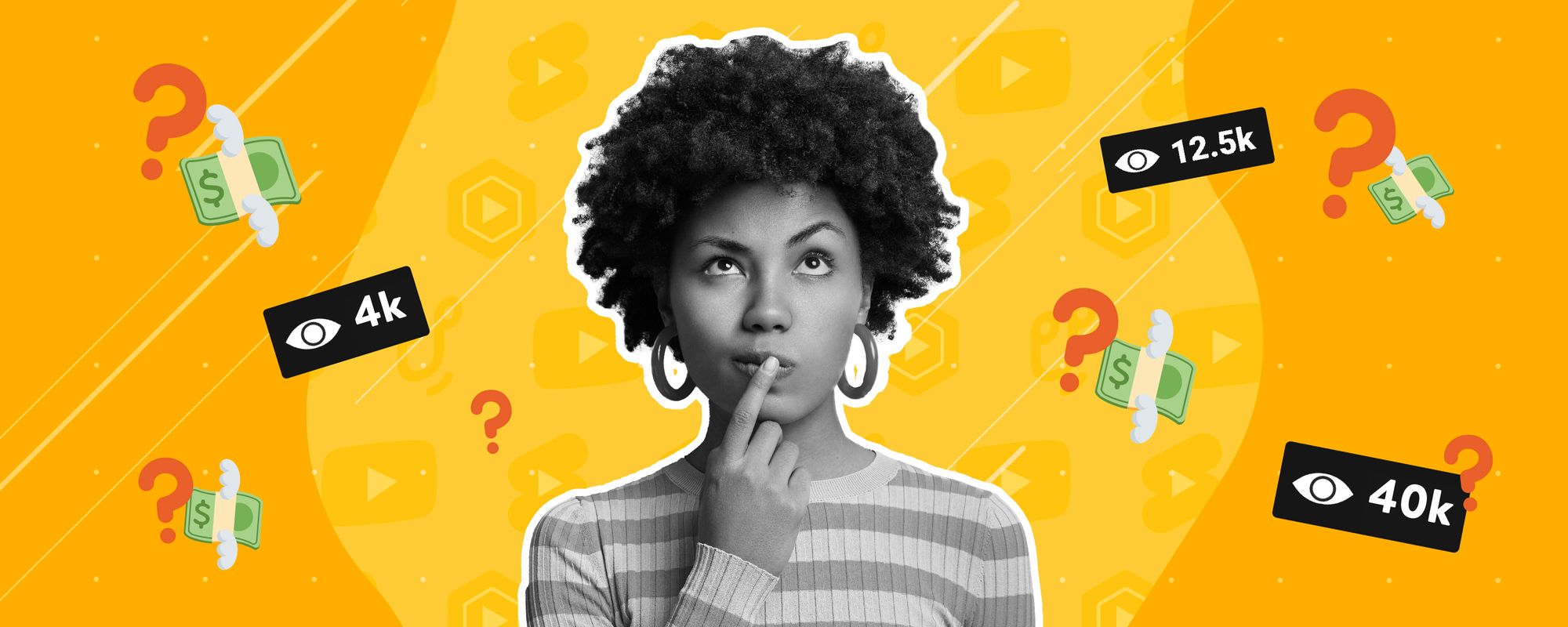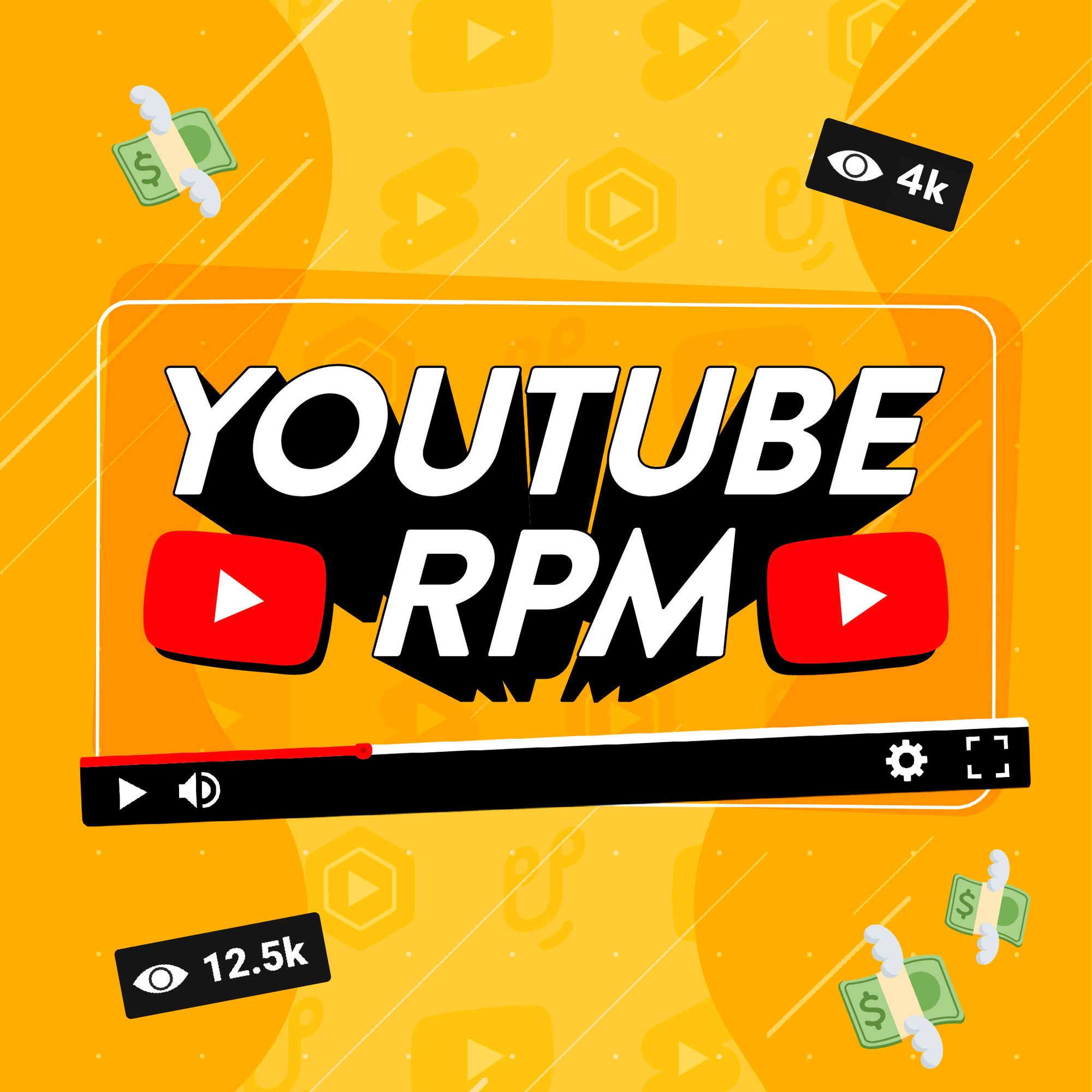The key to unlocking massive earnings from your YouTube videos is getting to know your metrics. And when it comes to seeing how much you can make compared to other creators, checking your YouTube RPM is the way to go. But what exactly is RPM on YouTube and how can you improve it?
The RPM of your YouTube channel is a surprisingly simple equation. Once you’re aware of it, RPM can help you identify your most profitable videos and work out ways to maximize your YouTube earnings. We’ve broken down exactly what it means, and created a helpful guide comparing RPMs across different niches, alongside tips for boosting your YouTube RPM.
- What is YouTube RPM
- RPM vs CPM: How are they different?
- Where to find your YouTube RPM
- Can you see the RPM of other channels?
- What is considered a good RPM?
- Six ways to increase your YouTube RPM
What is YouTube RPM?

RPM stands for Revenue per Mille (or revenue per thousand) and represents the amount of money you'll earn for every 1,000 views. It’s calculated by taking the total revenue you earn from your monetized content on YouTube, dividing it by your total video views and then multiplying by a thousand.
YouTube gives you ever-growing options when it comes to earning from your content, but the RPM you’ll see in YouTube Studio only counts revenue collected from:
- Ads shown on your videos
- Your share of YouTube Premium subscriptions
- Channel memberships
- Super Chat and Super Stickers sent during live streams
Once you know your RPM, you’ll be able to easily compare individual videos or even entire channels to see which are the most profitable. And when you have an idea of what your typical RPM is, you’ll quickly see which of your content is exceeding that benchmark and making you the most money.
How is YouTube RPM different from CPM?
Any search for YouTube RPM is likely to bring results for CPM too. But while both RPM and CPM relate to the money you make from YouTube, they measure slightly different things:
CPM (Cost per Mille) shows how much advertisers pay YouTube for 1,000 ad impressions. It only takes into account the cost of the ads that appear next to your videos and doesn’t include other revenue sources, like your cut of Premium memberships.
RPM (Revenue per Mille) represents what you actually earn for every 1,000 views on YouTube. It includes revenue from all monetization sources - like ads, memberships, and Super Chat - after YouTube’s revenue share has been taken out.
You’ll find RPM is typically lower than CPM. That’s because RPM takes into account the 45% cut YouTube keeps from your ad revenue, and also includes both monetized and non-monetized views. It’s why RPM is the more reliable of the two metrics when it comes to working out how profitable your content is.
Explore Uppbeat
Find the perfect copyright-free music for your videos 🧡
Where to find your YouTube RPM
You can find your YouTube RPM in YouTube Studio by following these steps:
- Log into your YouTube account and open YouTube Studio
- Go to the Analytics tab in the left-hand menu
- Select the Revenue tab at the top of the screen
- Your RPM will be displayed alongside CPM, total revenue, and other metrics
It’s here that you’ll find an in-depth rundown of how your earnings are calculated and which videos are best at bringing in passive income.
Can you see the RPM of other YouTube channels?
It would be great if you could see how much your fellow creators are making, but YouTube doesn’t let you sneak a peek at the RPM of other channels. That’s because RPM is a metric that’s specific to your own account and uses private data, like total revenue and views. After all, if you don’t have to share those figures, why should anyone else?
However, you can make an educated guess about a channel’s earnings if you consider their niche, audience size, and the amount of engagement they get on their videos. There are also tools like Social Blade that provide rough revenue estimates, but these tend to be based on CPM ranges rather than RPM.
What is considered a good RPM on YouTube?

Your RPM can vary greatly depending on factors like your audience’s location and the type of content you produce. This makes it tricky to use as a one-size-fits-all benchmark for comparing your YouTube channel to others.
As a ballpark, most YouTubers will see their RPMs fall within the $1-$6 range, but a lucky few will earn considerably more. To give you an idea of just how wide ranging RPMs can be, we’ve dug out what creators can expect to make in a handful of niches:
- Finance: Creators like Andrei Jikh often earn RPMs of $8–$20 due to competition among advertisers pushing high value financial products, like trading platforms and credit cards.
- Technology: Tech channels average $4–$8 RPM, with advertisers consistently wanting to appear alongside the expensive gadgets and software reviewed by the likes of Sara Dietschy.
- Lifestyle: RPMs for lifestyle creators, such as Zoe Sugg, are typically $2–$4. Despite the fact these videos have a broad appeal, they also have a less targeted audience for advertisers.
- Gaming: Gaming channels like jacksepticeye often see lower RPMs of around $1–$3, as gaming content tends to attract younger audiences with less purchasing power.
It’s also worth noting that even within these ranges, you’ll sometimes hear of creators making significantly more or less than these RPMs.
Six ways to increase your YouTube RPM

When you see the sheer range of different RPMs being reported by YouTubers, it’s clear there are lots of variants at play. We’ve drilled down into what affects your content’s profitability so you have a better idea of what’s going on behind your RPM figures. And for each factor listed below, we explain what you can do to boost your revenue.
1. Know where your most valuable viewers are based 🌎
How it affects RPM: Views from regions like the US, UK, and Canada tend to generate higher RPMs due to advertisers spending more on ads in those markets.
What you can do to increase your RPM: Find ways to appeal to viewers from these regions. Try uploading videos at a time that’s convenient for them, or calling out comments from viewers in those countries. By building an engaged audience, you’re more likely to attract advertisers that want to reach them.
2. Tailor content to what advertisers want to appear next to 🔥
How it affects RPM: Niches with competitive advertisers - such as finance and tech - often have higher RPMs than general lifestyle or entertainment content. This is because advertisers are more likely to spend big to reach the valuable audiences who watch those videos.
What you can do to increase your RPM: If your content can attract the higher-paying advertisers, you’ll be in a better position to earn the big bucks. Find a niche that works for your channel from our list of the most profitable YouTube niches. Even if your channel feels a step away from these topics, there might be video ideas you can take from them and shape to your niche - things like product reviews or tutorials.
3. Embrace the earning potential of longer content ⏱
How it affects RPM: YouTube wants to reward content that keeps people watching. Generally if your video is longer, it’s going to build up more watch time than a shorter clip. And because you’re keeping people within YouTube, you’re likely to earn a bigger share of its revenue as a result.
What you can do to increase your RPM: Think about how your content can work with longer formats. You’ll want to use engaging storytelling and editing techniques to keep viewers watching for as long as possible. And be mindful that you’re not simply extending videos for the sake of it - make sure they’re engaging throughout!
4. Encourage viewers to engage with your videos ❤️
How it affects RPM: YouTube’s algorithm loves content that drums up likes, comments and shares. It takes these positive signals and recommends that content to more people in their video suggestions. This results in more views and a bigger payday.
What you can do to increase your RPM: When it comes to boosting your engagement, it never hurts to ask! Encourage viewers to like, comment, and share by adding clear calls-to-action in your videos. Reply to their comments so that you’re building a stronger connection with your audience. And try to create super shareable content that viewers simply have to share to their friends.
5. Take advantage of YouTube’s full monetization options ✅
How it affects RPM: Some YouTubers don’t realize that they need to opt into monetization on their videos. YouTube gives you options when it comes to making money - so don’t pass them up!
What you can do to increase your RPM: Turn on monetization across your eligible videos and don’t be afraid to include mid-roll ads in your content. And once you have a dedicated following, be sure to make the most of it! Channel memberships and Super Chat will give viewers a further opportunity to share their love for your content.
6. Create eye-catching content people can’t get enough of 🎣
How it affects RPM: It’s no surprise that the better your content is, the more likely viewers are to keep watching. If you get more people to click on your videos and convince them to stick around your channel, your revenue will skyrocket as a result.
What you can do to increase your RPM: Grab people’s attention with compelling titles and thumbnails that they can’t resist clicking on. Once they’re watching your content, keep them there with punchy editing and end cards that serve up even more of your videos.
Boost your YouTube RPM to maximize your earnings

If you’re looking to make as much money from your channel as possible, YouTube RPM is the most important metric to get your head around. It shows just how effectively each of your videos is pulling in precious revenue, and provides a handy comparison with other creators.
While there is an element of the unknown when it comes to exactly how YouTube calculates your RPM, there are things you can do to boost it. Think about how your content can appeal to the types of viewers high-paying advertisers want to reach. Then once you’re earning the big bucks, it’s simply a case of racking up as many views as possible and keeping people hooked on your content.
Want to make the most of your channel’s earning potential? Check out our guide on how to make money on YouTube.
Expert guides to help grow your YouTube channel
Take your YouTube channel to the next level with our related guides on boosting your audience, racking up more views, and maximizing your monetization:
- 27 Easy Steps To Get More Subscribers on YouTube
- How to Get 1,000 Subscribers on YouTube for Free in 15 Easy Steps
- How to Join the YouTube Partner Program and Make Money from your Videos
- How to Make Money on YouTube
- YouTube Shorts Monetization: How Much Can You Earn From YouTube Shorts?
- How Much Does YouTube Pay for 1 million Views?
- YouTube RPM: What Is RPM and How to Maximize It
- How to get a YouTube Play Button: A Guide to YouTube Creator Awards
- How to Get More Likes on YouTube
- 8 Easy Steps To Get More Views on YouTube
- How To Title YouTube Videos: 13 Tips To Boost Clicks and Views
- The YouTube Algorithm: How It Works
- YouTube SEO: How to Rank and Optimize YouTube Videos to Get More Views
- YouTube Analytics: Data, Metrics and Tools to Grow your Channel








